Race Face Turbine Flat Pedals
Stated Weight (pair, with pins): 419 g
Blister’s Measured Weight: 180 & 181 g
Platform Size (width x length): 110 x 115 mm
Blister’s Measured Platform Size (usable platform area, width x length): 110 x 115 mm
MSRP: $189 USD
Bolted To: Kavenz VHP 16 V7
Reviewer: 6’, 160 lb / 183 cm, 72.6 kg
Test Locations: Washington
Test Duration: 4 months
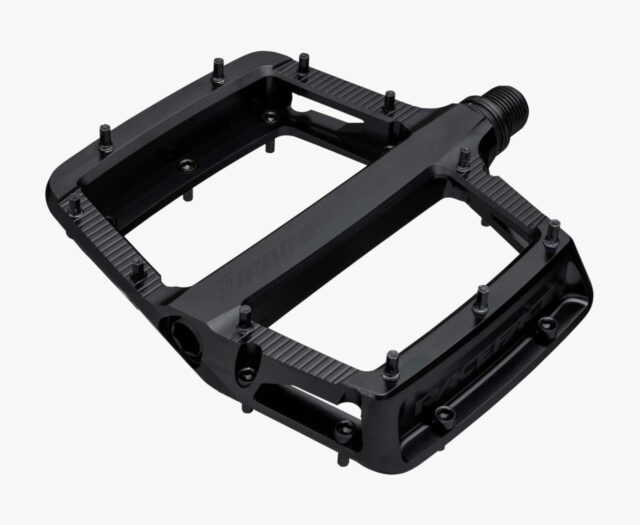
Intro
Race Face is no stranger to making pedals, having launched widely varied designs over the years, but they’ve historically prioritized creating pedals that are especially thin. Their latest Atlas pedals, for example, use an inboard bearing bulge against the crank to help minimize pedal thickness underfoot.
With their Turbine flat pedal, Race Face has gone in a different direction. With a more common axle design and some particularly formidable-looking pins, the Turbine prioritizes concavity and a large usable platform area. That all sounds great on paper, and fortunately, it carries over well to the trail, too. Read on for our Full Review after a long summer of riding the Turbines.
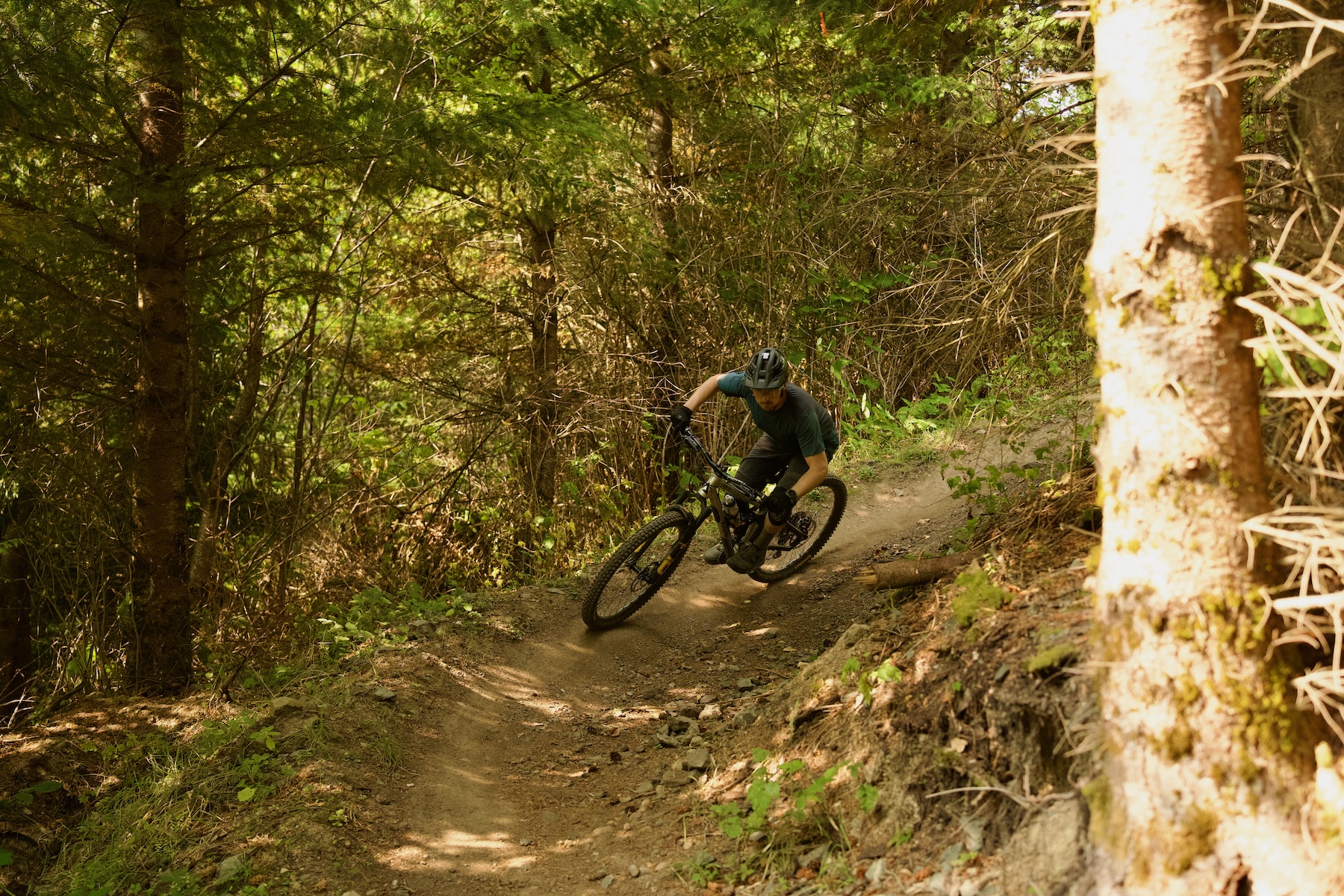
Design
I recently reviewed the OneUp Wave pedals, which aimed to merge the traits of concave and convex platform designs; in contrast, the Race Face Turbine goes all in on concavity. The 110 mm wide, 115 mm long platform has 3 mm of concavity on each side, measured from the outer edges of the pedal to the lowest point of the platform over the spindle. The 110 mm width measurement takes into account the full surface of the platform, which extends inward a bit toward the face of the crank arm, akin to the Chromag Dagga. As a result, the exposed axle is quite stubby.
That significant concavity means they aren’t the thinnest, at 20 mm in height at the leading and trailing edges. Race Face has taken some extra steps to reduce their likelihood of hanging up on obstacles, such as the asymmetric platform shape that’s wider at the front and narrower at the rear. The machining work still has sharper edges than some other big pedals like the Chromag Dagga, though, which means they can “stick” a bit more when hitting things like rocks, stumps, etc.
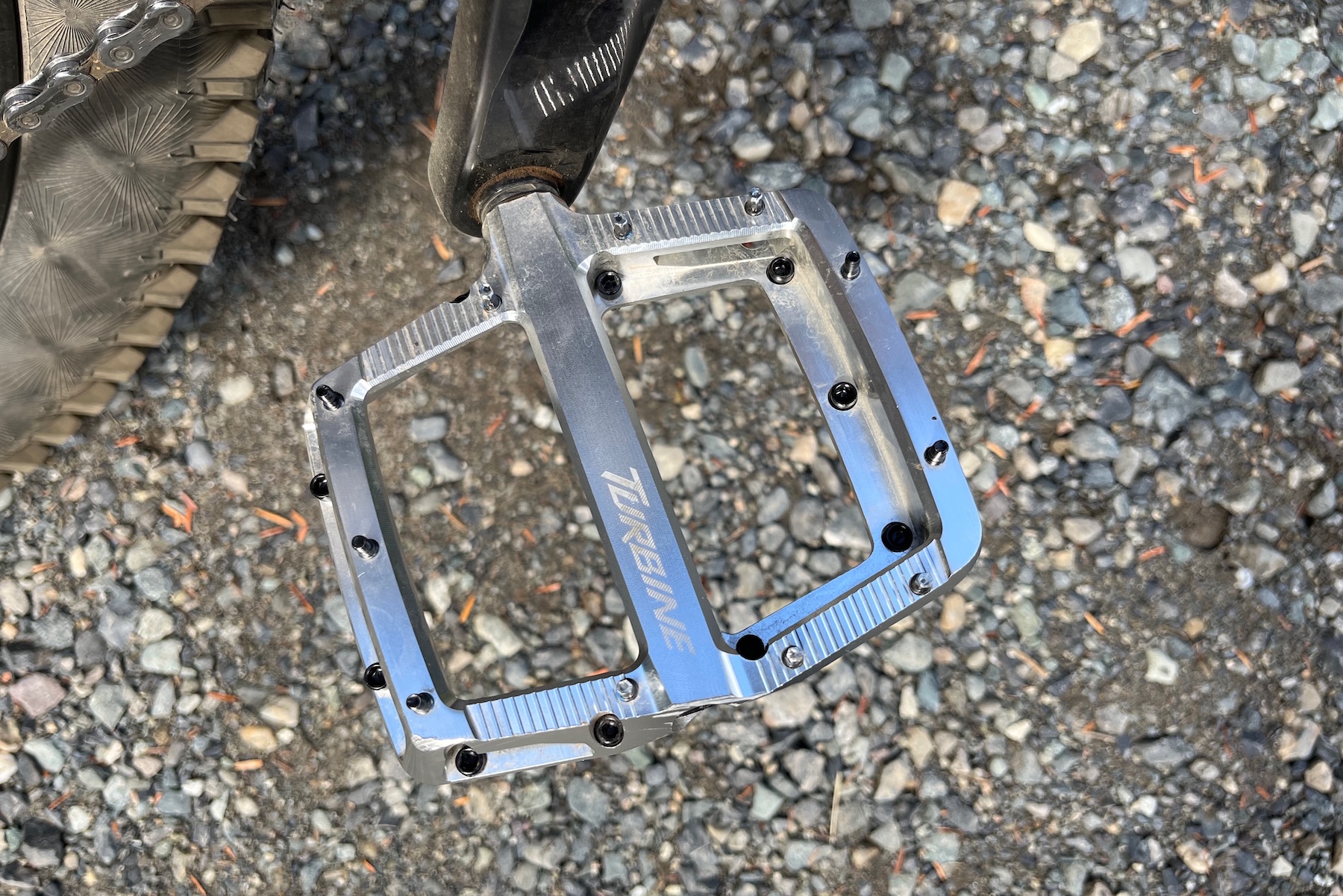
The Turbines come with 11 pins per side, each of which stands quite tall at 6 mm. Race Face includes some extra pins and a bunch of washers in the box, which can be used to lower the very tall standard pin height by 0.8 mm. The pins are quite sharp and pointy, but don’t have threads on them like set screws do, which influences their performance in certain ways — more on that below.
On-Trail Performance
The 6 mm pin height on the Turbines is imposing, and those tall pins go a long way toward generating high levels of mechanical grip. My Fox Union BOA Flat shoes are pretty chewed up at this point and never had the absolute stickiest rubber to begin with, but even those tired shoes sank right into place on the Turbines. Grub screws and similar designs use their rougher threaded surface to hold onto the shoe sole once engaged, but the smooth-sided pins on the Turbines seem to rely more on their sheer length for grip. My shoe releases pretty cleanly when picking up my foot vertically off the Turbine platform, but any sort of downward pressure allows the pins to bite hard. Once I figured out that deliberately lifting my shoe would create a tidy release from the Turbines’ grip, I found them to be fairly intuitive for making small foot placement adjustments. That’s obviously difficult to do in the moment on rough trails, but on smoother surfaces, I could adjust my foot position if needed a bit more easily than some other pin designs.
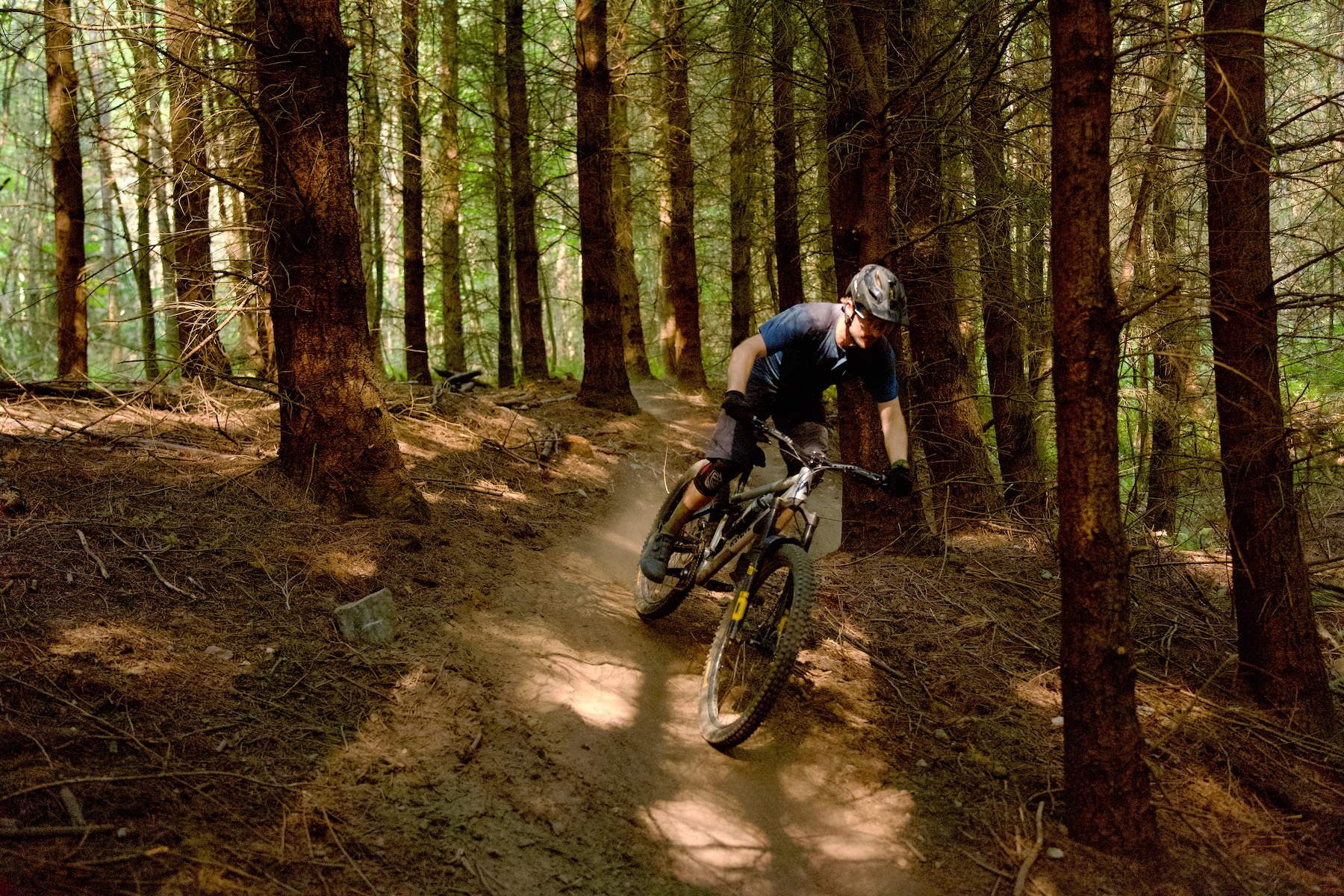
The stock pins are also sharp. Especially when new, those little tiny shin daggers managed to slice my calf several times when just slightly grazing the pedal on a hike-a-bike section. That risk dissipates as the sharp edges dull a bit with use, and I didn’t find the slightly dulled pins to have any downsides for grip. TL;DR: be careful with the pins when they’re new.
I appreciate the grip afforded by the aggressive pins, but where the Turbines really won me over is in their shape. The size of the pedal feels spot-on in its length and width for my size 11 shoes, and the deep-feeling concavity cradles my forefoot while offering lots of feel for where my foot is located on the pedal. Even on some huge days of descending on the blown-out trails of the Whistler Bike Park, the size and shape of the Turbines helped fight foot fatigue. They don’t feel as supportive as the OneUp Wave in that regard, but the grip levels are higher when I’m pushing hard in rough terrain.
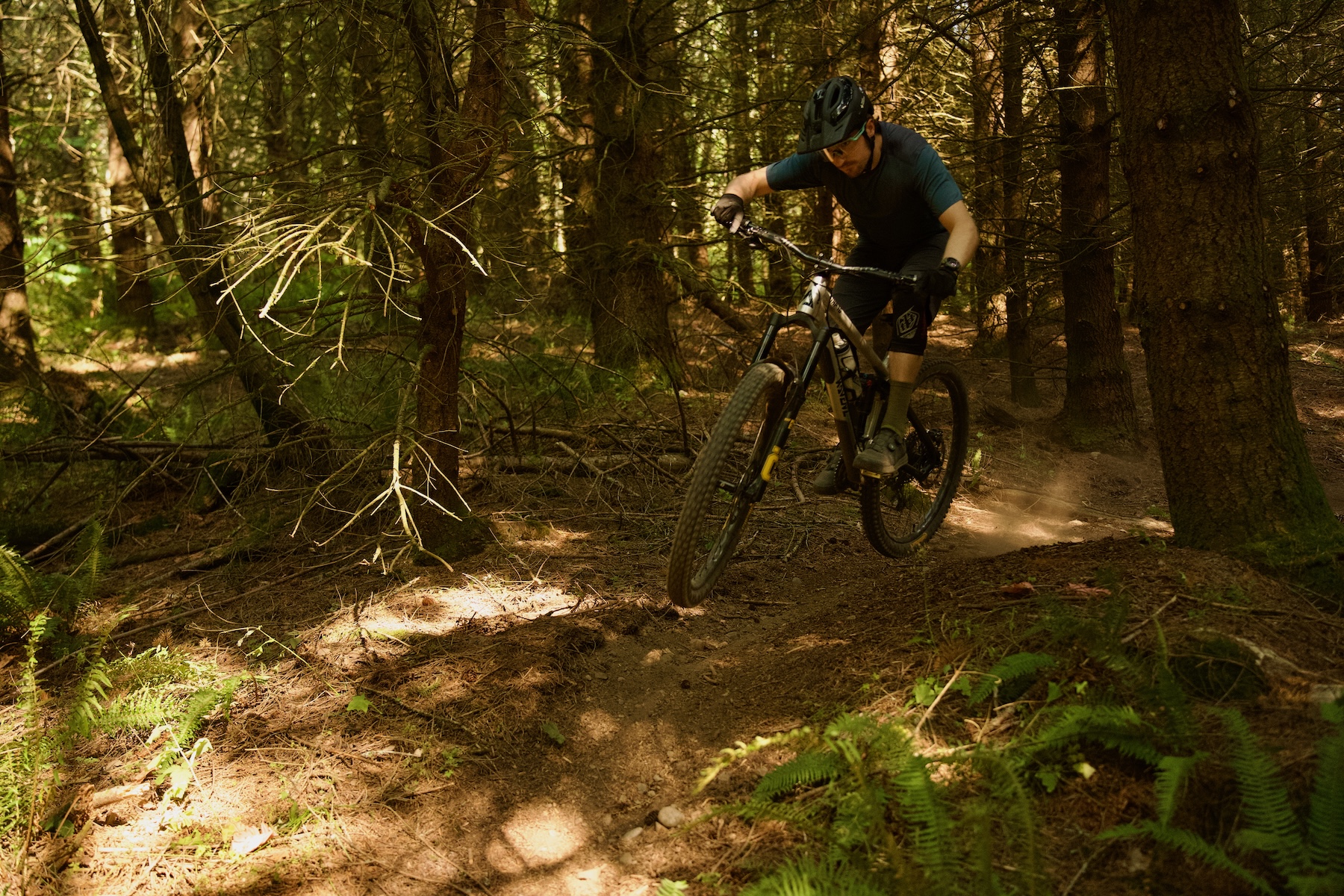
As a bit of an off-menu option, I decided to see how the Turbines would work with different pins installed. I had some spare pins from the Chromag Dagga, and threw them in on the leading and trailing edges. Using pin washers allows them to match the height of the Turbine pins, but the Dagga pins have a threaded tip that seems to stick a bit more aggressively when unweighting a foot. The result was a bit more mechanical grip when unweighting, seemingly locking the shoe to the pedal just a bit more than the smoother stock pins did. As someone who prefers maximal levels of grip, I was a fan, but it did make it harder to adjust foot placement. Regardless, it’s useful to know that the pins are cross-compatible with some other pedal designs for folks who want to tinker with more or less aggressive options.
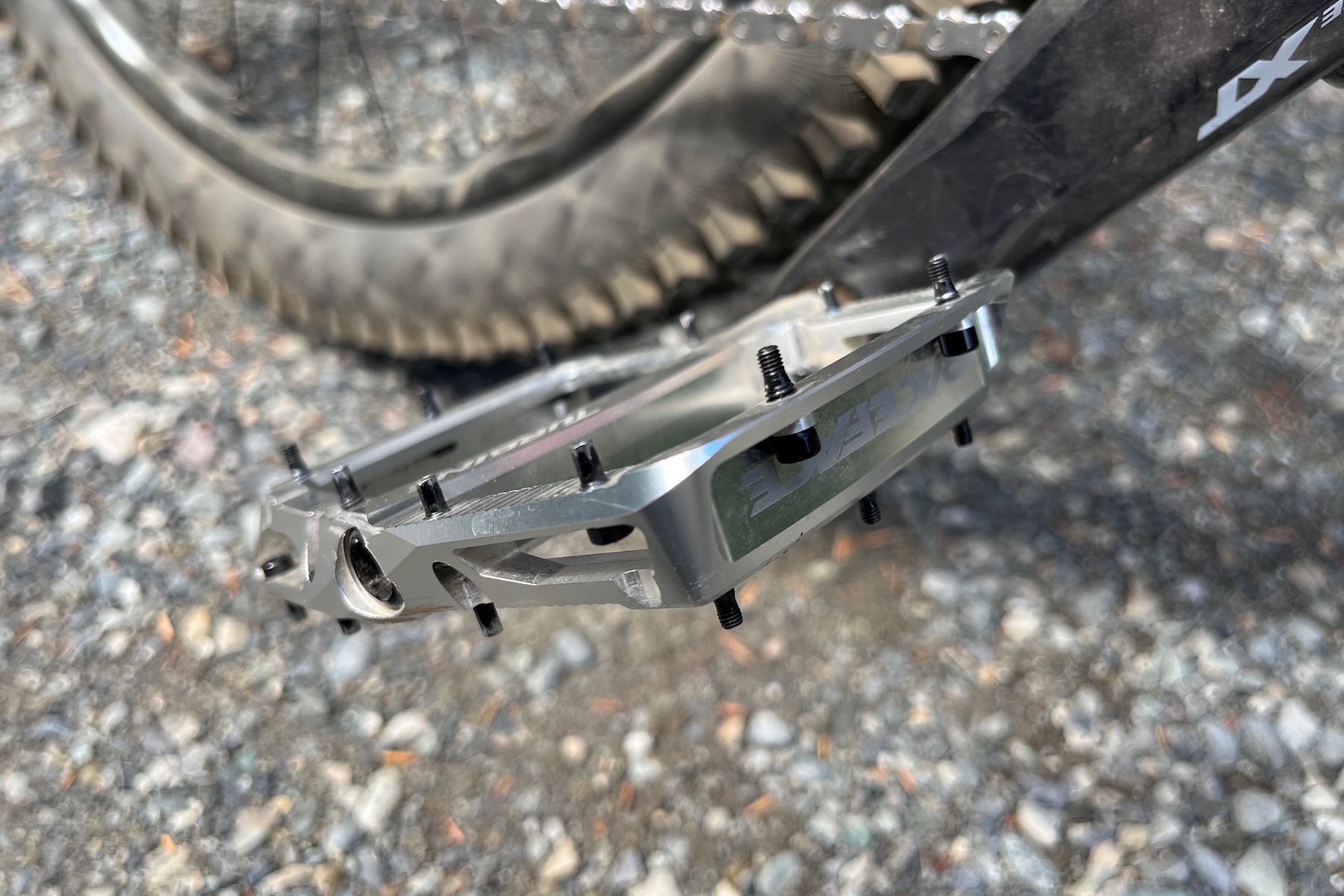
Durability
As you can likely tell, I’ve been pretty pleased with the Turbines, and that’s kept them in regular use through the testing process. They’ve seen everything from long pedal-powered missions to big days in the Whistler Bike Park, and they’ve held up just fine so far.
OneUp’s redundant sealing and multiple bearings have me extremely impressed with the resilience of both their Clip and Wave pedals, and while the Turbines are a lot more simplistic in their design, I find their internal arrangement to be adequately reliable. Like a lot of other flat pedals, the design uses a rubber seal at the inboard part of the axle, a bushing, and an outboard bearing, and it has held off powdery summer dust fairly well. Rebuild kits are available when the time comes (though they appear sold out or at least hard to track down at the time of publishing).
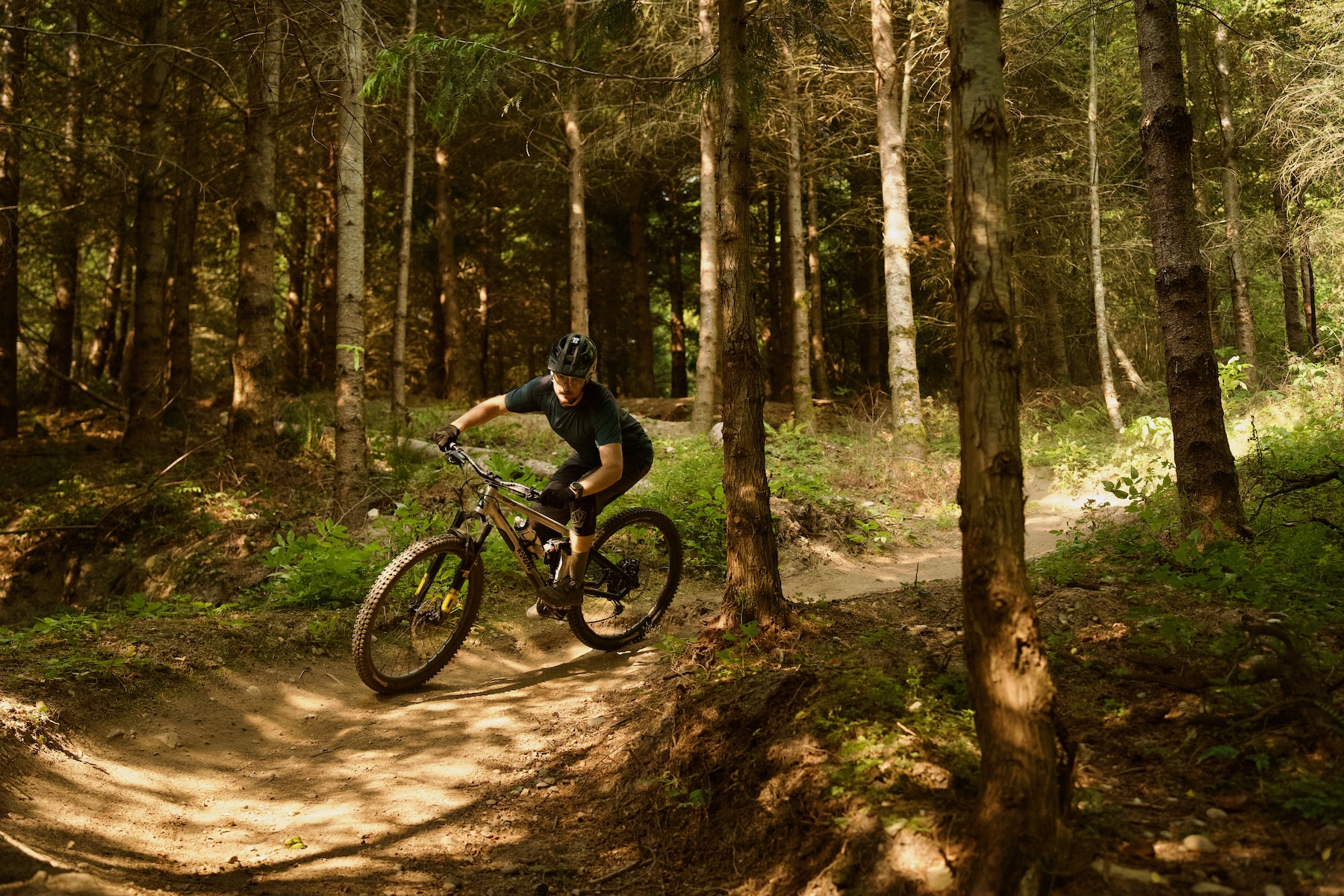
Bottom Line
There are loads of flat pedal options on the market, and the Race Face Turbines are near the top of the heap for my preferences. The asking price isn’t cheap, but the pedal shape manages to balance a supportive feel along with loads of grip. Folks looking for ease of repositioning their feet may want to look elsewhere, as the Turbines are pretty tenacious in their bite, but for security in tough conditions, Race Face has come up with something pretty special here.
